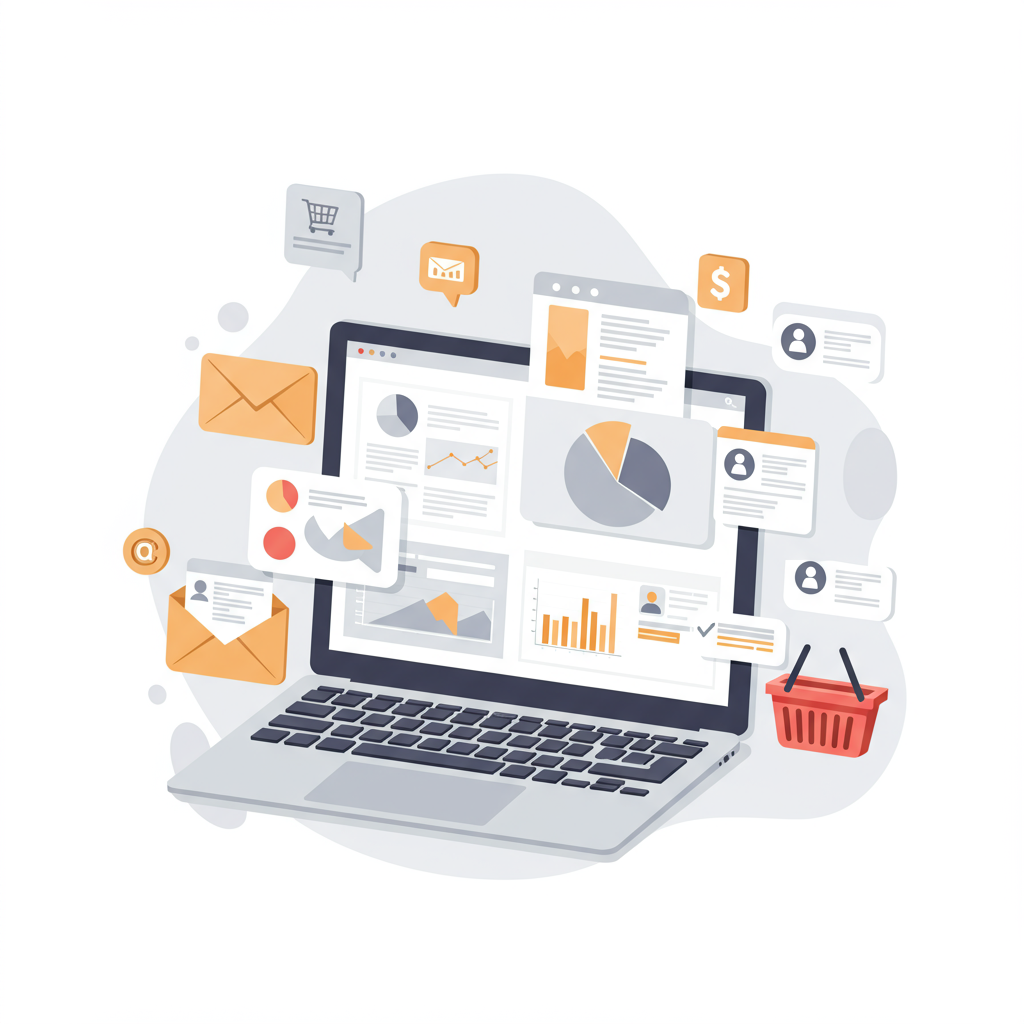Unlock unparalleled growth and customer loyalty for your e-commerce store by leveraging advanced email strategies.
As a Shopify merchant, you’re constantly looking for ways to connect with your customers and drive sales. While social media and paid ads have their place, I firmly believe that email marketing remains one of the most powerful and cost-effective channels available to you, especially as we look towards 2025.
In an increasingly noisy digital landscape, email offers a direct, personal line of communication. It’s a channel you own, free from algorithm changes or platform restrictions. For 2025, its importance is only set to grow as personalization and customer relationships become paramount.
The first step to any successful email marketing strategy is building a robust, engaged email list. This isn’t just about collecting addresses; it’s about attracting potential customers who genuinely want to hear from you.
I recommend implementing various opt-in methods on your Shopify store. Consider a prominent pop-up with an enticing offer, like a first-purchase discount or exclusive content, to capture attention.
Don’t stop there. An exit-intent pop-up can capture visitors about to leave your site, offering one last chance to convert them into subscribers. You could also offer a valuable lead magnet, such as a free guide or checklist related to your products, in exchange for an email address.
Integrate your email marketing platform seamlessly with Shopify. This allows for automatic data syncing, making it easier to track customer behavior and segment your audience effectively based on their interactions with your store.
Once you have a list, the next crucial step is segmentation. Sending generic emails to everyone is a recipe for low engagement and high unsubscribe rates. I always advise my clients to segment their audience based on various criteria.
Think about customer behavior on your site. Have they browsed specific product categories? Added items to their cart but not purchased? These actions provide valuable insights for highly targeted messaging that resonates.
Segment based on purchase history: first-time buyers, repeat customers, high-value customers, or those who haven’t purchased in a while. Each group requires a different approach and message to maximize impact.
You can also segment by demographics (if collected) or stated preferences. The more relevant your email, the higher your open and click-through rates will be, leading to better conversions.
This is where email marketing truly shines for Shopify merchants. Setting up automated email flows means you’re engaging with customers even when you’re not actively working, providing a 24/7 sales and support team.
Every new subscriber should receive a welcome series. I typically recommend 3-5 emails that introduce your brand, share your story, highlight popular products, and perhaps offer a small discount to encourage a first purchase.
Abandoned cart recovery is a non-negotiable for any Shopify store. A series of 2-3 emails reminding customers about their abandoned cart, perhaps with a gentle nudge or a limited-time offer, can significantly recover lost sales.
Don’t forget about your customers after they buy. A post-purchase series can include a thank-you email, shipping updates, product care tips, cross-sell/upsell recommendations, and a crucial request for a product review.
For customers who haven’t engaged or purchased in a specific period (e.g., 60-90 days), a win-back campaign can re-ignite their interest. Offer a special incentive, highlight new arrivals, or remind them of the value you provide.
While using a customer’s first name is a good start, true personalization goes deeper. I encourage you to leverage dynamic content based on their browsing history, past purchases, or even their location.
Many email platforms integrate with Shopify to automatically pull in product recommendations based on what a customer has viewed or purchased, making your emails highly relevant and increasing the likelihood of conversion.
Your emails shouldn’t just be about selling. Provide value. Share blog posts, behind-the-scenes glimpses of your brand, compelling customer testimonials, or helpful tips related to your products.
I advise a healthy mix of promotional emails, value-driven content, and brand storytelling. This keeps your audience engaged, builds loyalty, and prevents them from feeling constantly sold to.
Never assume what works best. I always recommend A/B testing different elements of your emails: subject lines, call-to-action buttons, imagery, email layouts, and even send times to find what resonates most with your audience.
Regularly review your email marketing analytics. Pay close attention to open rates, click-through rates, conversion rates, and unsubscribe rates. These metrics tell you what’s working and what needs improvement for continuous optimization.
As we move into 2025, data privacy regulations like GDPR and CCPA will continue to be important. Ensure your email practices are fully compliant, always obtaining explicit consent and providing clear, easy-to-use unsubscribe options.
Look out for advancements in AI that can help with email content generation, predictive analytics for even more precise segmentation, and even optimizing send times based on individual user behavior patterns.
Email marketing for your Shopify store in 2025 isn’t just about sending emails; it’s about building relationships, providing consistent value, and leveraging automation to scale your efforts efficiently. It’s a continuous process of learning and optimization.
What are your thoughts on these strategies, or what email marketing challenges are you currently facing with your Shopify store? I’d love to hear your perspective.
By focusing on these core principles – robust list building, intelligent segmentation, powerful automation, deep personalization, engaging content, and continuous optimization – you’ll be well-equipped to make email marketing a cornerstone of your Shopify success in 2025 and beyond.






